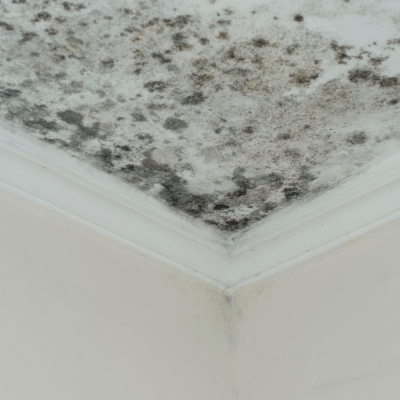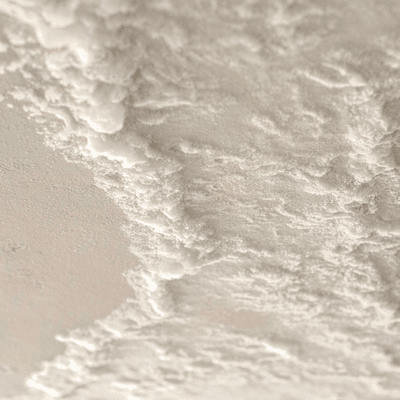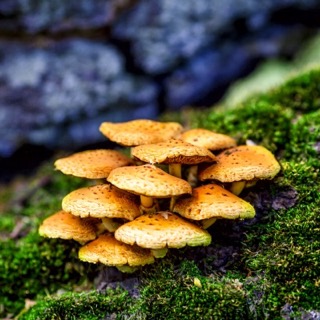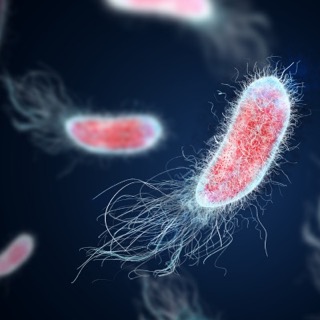When it comes to indoor air quality and home health, terms like mold vs mildew or mildew vs mold often get used interchangeably. But what is the difference between them? Each of these terms refers to something distinct, with its own characteristics, risks, and treatments. At Howard Environmental, we know that understanding these differences is key to identifying and addressing indoor hazards effectively. This guide will help clarify the unique qualities of mold, mildew, fungus, and bacteria, along with other related terms you may encounter.
Why Mold vs Mildew Matters
Many homeowners encounter unwanted growths in their homes, especially in damp areas. Without knowing exactly what you’re dealing with, it’s easy to assume all spots are the same and treat them similarly, which can lead to incomplete solutions or recurring issues. In reality, mold, mildew, and other organisms vary in how they grow, spread, and impact indoor air quality. By understanding the differences, you can make more informed decisions about cleaning, prevention, and when it’s time to call a professional.
Mold: The Multi-Colored, Fuzzy Culprit

Definition of Mold
Mold is a type of fungus that grows in multicellular structures called hyphae, creating a fuzzy or slimy appearance. It thrives in damp, warm environments with limited airflow and often appears in various colors like green, black, brown, white, or even yellow. Mold feeds on organic materials, breaking down substances like wood, paper, fabric, and even drywall.
Common Traits
Mold typically has a thick, fuzzy, or slimy texture, depending on its moisture level. Mold growth often releases a distinct musty or earthy odor. When left untreated, mold can penetrate deep into materials, making it harder to remove and causing structural damage over time. It can grow in almost any environment with enough moisture, making it common in kitchens, bathrooms, basements, and areas affected by water damage.
Mold vs Mildew
Mold differs from mildew in both appearance and behavior. Unlike mildew, which generally stays on the surface, mold tends to penetrate the surface it’s on. Mold’s darker colors and thicker textures make it easily recognizable, and it is more likely to cause respiratory symptoms and allergic reactions when present indoors.
Mildew: The Surface-Level, Powdery Fungus

Definition of Mildew
Mildew is another type of fungus, but it’s a specific kind of mold that grows on surfaces in a thin, powdery, or downy layer. Mildew is usually white, gray, or light brown and can often be found on moist surfaces in areas with high humidity and limited ventilation, like bathroom tiles, windowsills, and fabric.
Common Traits
Mildew has a flatter, lighter, and more powdery appearance compared to mold. It is typically easier to clean, as it doesn’t penetrate materials as deeply as mold does. Mildew has a relatively mild odor and is less likely to cause significant damage to surfaces, though it can still contribute to surface staining or discoloration if not treated.
Mildew vs Mold
The primary difference between mildew vs mold lies in their growth patterns and ease of removal. While mildew remains surface-level, mold can grow into the materials it infests, making it harder to eliminate. Mildew is often lighter in color and lacks the thick, fuzzy texture associated with mold, making it easier to wipe away with basic cleaning solutions.
Fungus: The Larger Kingdom

Definition of Fungus
Fungus is a broad term that encompasses all molds and mildews as well as other organisms like mushrooms and yeasts. Fungi are a diverse kingdom of organisms that absorb nutrients from organic material and typically thrive in moist environments. Fungi reproduce through spores, which spread easily through the air and can lead to growth in new areas.
Types of Fungi in the Home
- Mold and Mildew: These are both fungi, but each has distinct growth patterns and characteristics as described above.
- Yeast: Single-celled fungi commonly found in kitchens, especially on food items. Yeast doesn’t grow in the same multicellular structure as mold and mildew.
- Mushrooms: Some types of mushrooms can occasionally appear in damp indoor environments but are more common outdoors or in highly humid spaces.
Mold vs Mildew vs Fungi
While mold and mildew are both types of fungi, not all fungi fall into the mold or mildew category. Mushrooms and yeasts are additional examples of fungi but are typically less of a concern in indoor air quality than mold and mildew. Understanding the distinction helps clarify that “fungus” is the broadest term, with mold and mildew as specific types within this category.
Bacteria: Microscopic and Misunderstood

Definition of Bacteria
Unlike mold or mildew, bacteria are single-celled microorganisms that are structurally distinct from fungi. Bacteria can thrive in various environments, including damp areas of the home like kitchens and bathrooms. While some bacteria are harmless or even beneficial, others can contribute to unpleasant odors, biofilms (a slimy buildup on surfaces), and potential health risks.
Where It’s Found
Bacteria are often present in kitchens, bathrooms, and any areas exposed to moisture and organic matter, such as under sinks or near drains. While bacteria may not be visible like mold or mildew, they can contribute to bad smells and slippery films on surfaces, especially if areas aren’t cleaned regularly.
Fungi vs Bacteria
Unlike mold, mildew, or other fungi, bacteria don’t produce visible spores or hyphae. Bacterial growths are often odor-based rather than visible, and they do not produce the fuzzy, powdery texture typical of mold or mildew. Bacteria are more likely to form biofilms, which are slimy layers on surfaces, rather than growing into multicellular colonies.
Other Terms to Know
In addition to mold, mildew, fungus, and bacteria, there are other terms you may encounter that can cause confusion. Here’s a quick overview to clear things up:
- Algae: Algae are plant-like organisms that typically grow in damp, well-lit areas. Unlike mold or mildew, algae are green and don’t produce spores. Algae can sometimes appear on windowsills or around leaky faucets but are generally harmless and unrelated to indoor air quality concerns.
- Biofilm: Biofilms are layers of bacteria or fungi that form on surfaces, creating a slimy, often sticky texture. Biofilms commonly form in places where water sits, like drains or the edges of showers. Although biofilms may contain fungi or bacteria, they are a distinct phenomenon and require specific cleaning methods.
- Lichens: Lichens are symbiotic relationships between fungi and algae or bacteria. They’re usually found outdoors, such as on rocks or tree trunks, and rarely occur indoors. Lichens are a good example of why it’s essential to recognize the differences between types of growth.
- Mold Spores: Spores are the reproductive units of mold and mildew. Mold spores are microscopic and travel easily through the air, which is how mold spreads to new areas. Spores are often the cause of allergic reactions and respiratory symptoms in sensitive individuals.
- Yeast: Yeast is a type of single-celled fungus commonly found in food-related contexts. Unlike mold or mildew, yeast doesn’t form multicellular structures or produce fuzzy growths on surfaces, and it’s generally associated with food spoilage rather than indoor air quality issues.
What is the Difference? A Quick Look
For a quick comparison of each term and its unique characteristics, here’s a handy breakdown:
| Term | Description | Common Locations | Appearance | Distinction |
| Mold | Multicellular fungus that penetrates surfaces. | Walls, ceilings, fabrics | Fuzzy or slimy | Darker, deeper growth |
| Mildew | Surface-level fungus, a type of mold | Bathroom tiles, windows | Powdery, light | Lighter color, flat texture |
| Fungus | Large kingdom including mold, mildew, yeast | Varied | Varies | Umbrella term for molds and more |
| Bacteria | Single-celled, odor-based growth | Kitchens, bathrooms | Not usually seen | Forms biofilms, differs structurally |
| Algae | Plant-like organism, unrelated to fungi | Damp, light-filled areas | Greenish | Harmless, photosynthetic |
| Biofilm | Slimy layer of bacteria/fungi | Drains, shower edges | Slimy layer | Usually bacterial, requires cleaning |
| Lichens | Symbiotic fungi and algae, mainly outdoors | Rocks, tree trunks | Crusty or leafy | Rarely indoors, symbiotic nature |
Why Knowing the Difference Matters
Understanding the difference between mold vs mildew vs bacteria or other indoor growths is essential for making informed decisions about how to address and prevent these issues effectively. Each type of growth has its own characteristics, causes, and potential health impacts, so accurately identifying what you’re dealing with helps ensure you use the right methods to treat it.
At Howard Environmental, we’re here to help you navigate these distinctions and provide expert guidance on addressing any indoor hazards you may encounter. If you suspect mold or mildew in your home but aren’t sure what you’re dealing with, our team can provide professional assessments to ensure you get the safest and most effective solutions. Contact us today to schedule an inspection or learn more about how we can help maintain a healthier indoor environment for you and your family.
Keep Reading: The Link Between Home Mold Toxicity and Your Health

